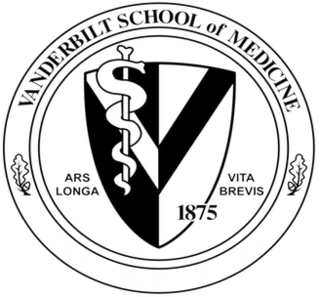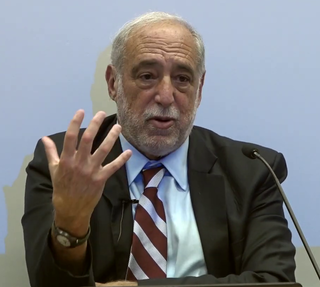
Pediatrics is the branch of medicine that involves the medical care of infants, children, adolescents, and young adults. In the United Kingdom, paediatrics covers many of their youth until the age of 18. The American Academy of Pediatrics recommends people seek pediatric care through the age of 21, but some pediatric subspecialists continue to care for adults up to 25. Worldwide age limits of pediatrics have been trending upward year after year. A medical doctor who specializes in this area is known as a pediatrician, or paediatrician. The word pediatrics and its cognates mean "healer of children", derived from the two Greek words: παῖς and ἰατρός. Pediatricians work in clinics, research centers, universities, general hospitals and children's hospitals, including those who practice pediatric subspecialties.

X-linked agammaglobulinemia (XLA) is a rare genetic disorder discovered in 1952 that affects the body's ability to fight infection. As the form of agammaglobulinemia that is X-linked, it is much more common in males. In people with XLA, the white blood cell formation process does not generate mature B cells, which manifests as a complete or near-complete lack of proteins called gamma globulins, including antibodies, in their bloodstream. B cells are part of the immune system and normally manufacture antibodies, which defend the body from infections by sustaining a humoral immunity response. Patients with untreated XLA are prone to develop serious and even fatal infections. A mutation occurs at the Bruton's tyrosine kinase (Btk) gene that leads to a severe block in B cell development and a reduced immunoglobulin production in the serum. Btk is particularly responsible for mediating B cell development and maturation through a signaling effect on the B cell receptor BCR. Patients typically present in early childhood with recurrent infections, in particular with extracellular, encapsulated bacteria. XLA is deemed to have a relatively low incidence of disease, with an occurrence rate of approximately 1 in 200,000 live births and a frequency of about 1 in 100,000 male newborns. It has no ethnic predisposition. XLA is treated by infusion of human antibody. Treatment with pooled gamma globulin cannot restore a functional population of B cells, but it is sufficient to reduce the severity and number of infections due to the passive immunity granted by the exogenous antibodies.
Judith Goslin Hall is a pediatrician, clinical geneticist and dysmorphologist who is a dual citizen of the United States and Canada.
William Arthur Cochrane, was a Canadian physician, pediatrician, academic, and medical executive.

Bruton's tyrosine kinase, also known as tyrosine-protein kinase BTK, is a tyrosine kinase that is encoded by the BTK gene in humans. BTK plays a crucial role in B cell development.
Primary immunodeficiencies are disorders in which part of the body's immune system is missing or does not function normally. To be considered a primary immunodeficiency (PID), the immune deficiency must be inborn, not caused by secondary factors such as other disease, drug treatment, or environmental exposure to toxins. Most primary immunodeficiencies are genetic disorders; the majority are diagnosed in children under the age of one, although milder forms may not be recognized until adulthood. While there are over 430 recognized inborn errors of immunity (IEIs) as of 2019, the vast majority of which are PIDs, most are very rare. About 1 in 500 people in the United States are born with a primary immunodeficiency. Immune deficiencies can result in persistent or recurring infections, auto-inflammatory disorders, tumors, and disorders of various organs. There are currently limited treatments available for these conditions; most are specific to a particular type of PID. Research is currently evaluating the use of stem cell transplants (HSCT) and experimental gene therapies as avenues for treatment in limited subsets of PIDs.

Vanderbilt University School of Medicine (VUSM) is the graduate medical school of Vanderbilt University, a private research university located in Nashville, Tennessee. The School of Medicine is primarily housed within the Eskind Biomedical Library which sits at the intersection of the Vanderbilt University and Vanderbilt University Medical Center (VUMC) campuses and claims several Nobel laureates in the field of medicine. Through the Vanderbilt Health Affiliated Network, VUSM is affiliated with over 60 hospitals and 5,000 clinicians across Tennessee and five neighboring states which manage more than 2 million patient visits each year. As the home hospital of the medical school, VUMC is considered one of the largest academic medical centers in the United States and is the primary resource for specialty and primary care in hundreds of adult and pediatric specialties for patients throughout the Mid-South.

Barry S. Zuckerman is Professor and Chair Emeritus of the Department of Pediatrics at Boston University School of Medicine/Boston Medical Center. He started the Division of Developmental and Behavioral Pediatrics at the Boston University School of Medicine and Boston City Hospital and was one of 12 founders of the Society of Developmental and Behavioral Pediatrics. He was appointed chair of Pediatrics in 1993 and was asked to be First Medical Director of Boston Medical Center when Boston City Hospital merged with University Hospital. He is a co-founder of Reach Out and Read, a national childhood literacy program in the United States, founder of Medical-Legal Partnership, and co-founder of Health Leads, Healthy Steps, and the Nutrition & Fitness for Life pediatric obesity program, all of which have transformed pediatric care for low-income families. Most recently, along with colleagues, he developed a free app for pediatric primary care called "Small Moments, Big Impact" to promote the mother-infant relationship and emotional well-being for low-income mothers from birth through the first six months of their baby's life.
Amin J. Barakat is a Lebanese-American physician known for the diagnosis Barakat syndrome.

Gunnar B. Stickler was a pediatrician who made substantial contributions to the field of pediatrics. He was the first scientist to describe a hereditary condition now known as Stickler syndrome.
Hans Dieter Ochs, is an immunologist and pediatrician. He is Professor of Pediatrics, Division of Immunology, Department of Pediatrics, University of Washington School of Medicine, Seattle.

Angelo Mario DiGeorge was an American physician and pediatric endocrinologist from Philadelphia who pioneered the research on the autosomal dominant immunodeficiency now commonly referred to as DiGeorge syndrome.
Frank Aram Oski was an American pediatrician. After holding several faculty positions at medical schools, he spent several years as the chair of pediatrics at Johns Hopkins School of Medicine. He was the founder and editor of the journal Contemporary Pediatrics, and he edited one of the most widely read textbooks in pediatrics.
Charles E. Mullins is a retired pediatric cardiologist who practiced at Baylor College of Medicine and Texas Children's Hospital. He is known for advancing cardiac catheterization techniques to treat congenital heart defects, and has been referred to as the father of modern interventional pediatric cardiology.

Marshall L. Summar is an American physician, clinical geneticist and academic specializing in the field of genetics and rare disease. He is board-certified in pediatrics, biochemical genetics and clinical genetics. He is best known for his work in caring for children with rare genetic diseases.
Joseph Dancis was an American pediatrician at Bellevue Hospital in New York City known for his research contributions to neonatology and placentology. He received the John Howland Award in 1988.
Louis J. Muglia is an American medical geneticist, endocrinologist and pediatrician noted for his research on premature birth and prenatal testing. Muglia was the A. Graeme Mitchell Chair and Directory of the Division of Human Genetics and Vice Chair for Research at Cincinnati Children's Hospital Medical Center. He was also the director of the Center for the Prevention of Preterm Birth at Cincinnati. In January 2020, Muglia became the President and CEO of the biomedical research foundation, the Burroughs Wellcome Fund.
Harvey Louis Levy is an American biochemical geneticist, pediatrician, physician scientist and academic. He is Senior Physician in Medicine and Genetics at Boston Children’s Hospital and Professor of Pediatrics at Harvard Medical School.
Jordan Scott Orange is an American pediatric immunologist. Orange is credited with defining a new class of diseases known as natural killer cell deficiencies.
Shari L. Barkin is an American pediatrician. In 2021, she was elected a Member of the National Academy of Medicine for "pioneering pragmatic randomized controlled trials in community settings, undertaken in collaboration with parents and community partners, and addressing health disparities in pediatric obesity."








